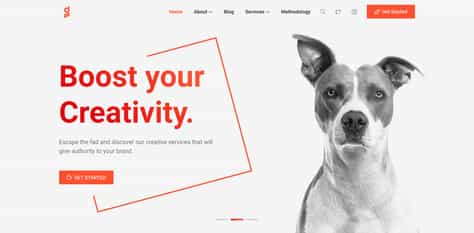Our project execution strategy accounts for all types of projects, whether you’re starting small, growing systematically or already entrepreneurial. Our approach towards each project is categorized and well balanced to every client’s requirement.

Working
Methodologies
Waterfall Method
For Constrained Budget
Very clear scope and stable set of requirements that isn’t likely to change throughout the project
Agile Scrum
For Evolving Scope/Hired Team
The scope is defined very briefly and the requirements are very likely to change throughout the project
How to Engage?
Every project is unique – and hence requires a dedicated and special treatment. Besides the critical triangle of cost, time and scope, the working model between the ‘client’ and the ‘agency’ also plays a crucial role in balancing the former.
That’s why we have clear and robust project execution models which are very flexible and client-centric at their core. But before embarking on any project, whether it’s a simple website or a more complex software development, it is important we help you employ the ‘correct’ project execution model.
“A project might be completed without the use of a project execution process, but most times, the absence of one leads to the failure of it”.
TIME
COST
SCOPE
Waterfall or Agile? The right process for you!
Out of the numerous project management methodologies available, we make use of the two rather popular methodologies. The Waterfall Methodology, and The Agile Methodology. Each of these methodologies has the specific type of projects they are best used with. Identifying just the right strategy and execution model based on project characteristics is a crucial decision that our team of experts helps you make.
Flexible at the core. Organized to stay in sync
Engaging with Waterfall Method
Discover
Brainstorming
Hypothesis
Conceptualisation
Assumptions
Constraints
Define
Req. Definition
SRS Document
Project Planning
Dev. Planning
Milestones
Conception
System Design
Wireframing
Prototyping
Conception UI / UX
Architecture
Develop
Coding
Apis
Testing / QA
Debug
Change Mgmt
Deliver
Environment
Deployment
Migration
Support
Review
The waterfall methodology is broken down into linear, sequential phases with each phase dependent on the deliverable of the previous phase of your project. The lifecycle of a project under this method can be summarised under five segments:
discovery, definition, design, development, and delivery.
To understand if your project falls into Waterfall Project Management, it needs to take into account assumptions made about the project, project constraints, the project objective, its business needs, and the acceptance criteria of the project among other things. If all these factors are well defined and measurable, then waterfall method works for your project.
Because your project will have relatively defined features and functionality, A software requirement document (SRS) will be laid out to describe expectations and scope of the project which will be used till the final hand off of the project.
What if my requirements evolve?
Because of the uniqueness of every project, there are bound to be uncertainties during its execution. This could be anything from buggy third-party dependencies to change in existing scope. We make sure these uncertainties are identified and planned for by managing risks for your projects.
Additionally we take the time to plan out the various aspects of a project before execution, but things are bound to change as time goes on. ‘Change is the only constant’ thing in a project. Hence we have a system put in place to manage these changes. We measure the impact of changes on the existing scope, and calculate the time and cost that comes with the changes. Finally, we make sure we update the SRS document.
The Waterfall Process continues as it is meant to be, with Quality Assurance Process in the end to make sure our project deliverables tally with the predefined or revised scope of the project.
Use Cases:
The Waterfall Methodology
Stabilité
Has a very clear scope and stable set of requirements that are unlikely to change throughout the project.
Predictability
Can define clear long term milestones and can review the progress based on periodic deliverables.
Development Ready
Less time to spend with the development team due to the product owner needing to focus on the business side of the venture.
Strict Budget
Constrained budget with critical features that cannot be compromised.
Engaging with Agile SCRUM Method
Continuous Iteration. Quicker Risk Mitigation
The SCRUM methodology is an implementation of the Agile project management approach that requires continuous iteration of development and testing in the software development lifecycle process. Both development and testing activities are concurrent unlike the Waterfall model.
Agile Vs Waterfall
When does Agile Project Execution Model Work?
A product requires iterative development and requires development with an integrated team.
A product requires a faster risk mitigation strategy or a “fail-early” approach to development.
The quality, cost and time for developing the product are important constants with flexible and varying requirements.
Roles in SCRUM
We have three key scrum roles. There is the product owner ーthe one who came up with the idea for the product, the scrum master who ensures the team members follow the agile principles and value, and then the team members themselves; they are ideally a team of seven cross-functional members.
Product Owner
One who carries the vision of product
Scrum Master
Coach, Fixer, Gatekeeper
Membres de l'équipe
Exucators, Ideally a team of 7 cross-functional members
Deliverables in Agile Method
Product Backlog
This is generally in the form of user stories. It is prepared by the product owner. It is here the product clients vision for the product is drafted.
Release Backlog
The release backlog is prepared by the SCRUM master who takes the product backlog as input, and translates it into a list of tasks that would be released intermittently.
Sprint Backlog
This is prepared in collaboration with the team. Here, the release backlog is taken and divided into sprints of one or two weeks.
Defect Backlog
The defect backlog contains a list of defects identified during the one to two weeks sprint. These defects are dealt with immediately which is necessary for a project to be declared complete.
Agile Meetings
We have three key scrum roles. There is the product owner ーthe one who came up with the idea for the product, the scrum master who ensures the team members follow the agile principles and value, and then the team members themselves; they are ideally a team of seven cross-functional members.
Use Cases: Agile SCRUM Methodology
Short Team Goals
Clear short-term milestones and periodic reviews of the progress.
Iterative Development
More time to spend with the development team by sharing clear objectives and goals so that they are always in sync with the project manager.
Feature Inspection
Multiple iterations of a given feature and fine-tuning of the feature by inspecting all the parts.
Sprint Planning
The client requires early and frequent opportunities to look at the product and make decisions and changes to the project.
Continuous Reviews
Make regressive iterations in the testing phase is required.
Agile works best with projects that have a high level of uncertainty
Waterfall works best for projects with high value et certainty.
Both Agile and Waterfall are two different schools of thought in the project management world. The right project execution process, whether it’s Waterfall or Agile depend on the context of your project. Like we always say-Every project is unique and requires a different treatment altogether.
Contrary to popular belief, Agile methodology doesn’t work with all types of projects. For instance, if you own a grocery store, and it works well, and you want to open another one. You don’t need ‘Agile’ way of project management. It would simply be a waste crucial resources that are already scarce. How we help our clients identify if they need Agile methodology is based on the level of uncertainty, value proposition, operational and value risks involved.
Similarly, Waterfall method better known as the rather ‘traditional’ method to project management is used for better ‘quality’ standards due to its strict documentation and ‘assembly line’ production features. Well that’s not entirely true, as ‘Quality’ is subjective to a projects context. You can build quality into Agile projects just as much as you can in Waterfall projects. You can also have bad quality in Waterfall projects just like you can in Agile projects.
Conception efficace d'interface utilisateur/UX mobile
Discovery Workshop est conçu pour fournir des informations précises et détaillées.

Merci !
We hope you found this article to be useful Just in case, if you’d like to keep this with you – go ahead and download it as a PDF presentation.